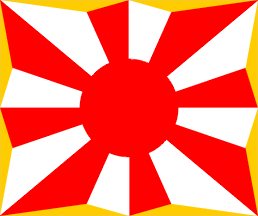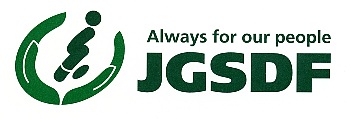|
|
 |
|


Welcome to my website on the Japanese military from 1945-2005. This site will cover the rise of the Japanese military
from the ashes of defeat at the hands of the US military, to its modern place in the international community. The Japanese
Self -Defense Force is the modern name for the Japanese military. This force isn't a outward military force as the US
and other world militaries. This is due to provisions in the Japanese constitution written after WW II. This website
offers a historical background, and then a present day look at the military in Japanese society.
|
 |
|
A military proscription is included as Article 9 of the 1947 constitution stating, "The Japanese people
forever renounce war as a sovereign right of the nation and the threat or use of force as a means of settling international
disputes." That article, along with the rest of the "Peace Constitution," retains strong government and citizen support and
is interpreted as permitting the Self-Defense Forces (SDF), but prohibiting those forces from possessing nuclear weapons or
other offensive arms or being deployed outside of Japan. . In July of 1950, in the midst of pressures from America's
entrance into an increasingly bloody Korean War, General Douglas MacArthur implemented a Japanese National Police Reserve
(NPR) to help the Occupation forces maintain Japan's public peace. This was the precursor to the SDF. A defensive
system alone does not count as "war potential," and therefore as long as the SDF is a defensive unit only it is constitutionally
acceptable. Japan was seen by Japanese and American policymakers alike as a bastion against Communism in Asia, and the
SDF was supposed to protect not only Japan's capitalist industries, but also the safety of Japan's strategic geographical
position. Japan's national defense policy has been based on maintaining the 1960 Treaty of Mutual Cooperation and Security
with the United States, under which Japan assumed unilateral responsibility for its own internal security and the United States
agreed to join in Japan's defense in the event that Japan or its territories were attacked. The Soviet invasion of Afghanistan
in 1979 and the buildup of military forces in the Soviet Far East, including a group of islands to the north of Hokkaido,
which were occupied by the Soviet Union but claimed by Japan, led Japan to develop a program to modernize and improve the
SDF in the 1980s, especially in air defense and antisubmarine warfare. In the early 1990s, the government was reevaluating
its security policy based on reduced East-West tensions. The Japanese government is reviewing the National Defense Program
Outline, formulated in 1995, by the end of 2004. Suggestions that Japan is increasing military capabilities, have unnerved
China and other Asian countries invaded by Japan during World War II.
|
 |
|
The Security Council was established in July 1986. The council is presided over by the prime minister and includes the
ministers of state specified in advance in Article 9 of the Cabinet Law; the foreign minister, the finance minister, the chief
cabinet secretary, the chairman of the National Public Safety Commission, the director general of the Defense Agency, and
the director general of the Economic Planning Agency. The chairman of the Security Council also can invite the chairman of
the Joint Staff Council and any other relevant state minister or official to attend. Replacing the National Defense Council,
which had acted as an advisory group on defense-related matters since 1956, the Security Council addresses a wider range of
military and nonmilitary security issues, including basic national defense policy, the National Defense Program Outline, the
outline on coordinating industrial production and other matters related to the National Defense Program Outline, and decisions
on diplomatic initiatives and defense operations.
In the postwar political system, executive power has been vested in the cabinet. The cabinet head is the prime minister,
responsible for appointing and dismissing other cabinet members. Cabinet ministers include those appointed to head the twelve
ministries, and the ministers of state placed in charge of the agencies and commissions of the Office of the Prime Minister,
which itself has the status of a ministry. They include the director general of the Defense Agency, equivalent to a minister
of defense but lacking ministerial status (a reflection of the Article 9 renunciation of war). Also among the ministers of
state are the chief cabinet secretary, who coordinates the activities of the ministries and agencies, conducts policy research,
and prepares materials to be discussed at cabinet meetings, and the director of the Cabinet Legislative Bureau, who advises
cabinet members on drafting the legislation to be proposed to the Diet. Although the chief cabinet secretary does not have
ministerial rank, the position is influential within the cabinet because of its coordination role.

|
|
 |
|
|
|
SSG AMAR REYNOLDS* 5515 NW 15th AVE* FT. LAUDERDALE, FL 33309* 2005
|
|
|
 |

